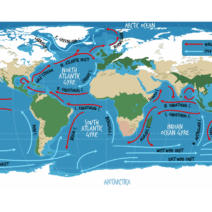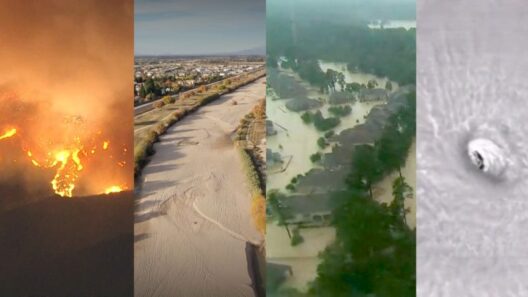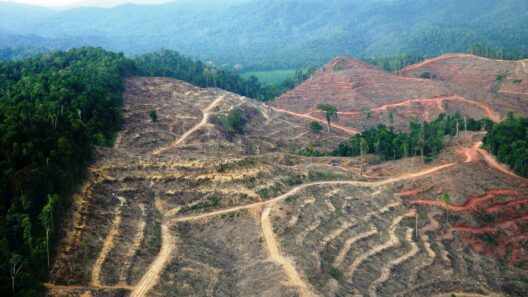In the tumultuous arena of climate discourse, few figures ignite as much curiosity as Pat Robertson. A household name in evangelical circles, Robertson has long wrestled with the interplay between faith and science. As the climate crisis escalates, the question of his stance on global warming emerges with renewed urgency. Does this prominent religious leader acknowledge the growing body of scientific evidence? Or does he maintain a skeptical posture regarding climate change?
To understand Robertson’s perspective on global warming, it is pivotal to explore the broader relationship between faith and environmental stewardship. Many religious communities advocate for the protection of the planet as a divine mandate. Various faith leaders emphasize that human beings are stewards of the Earth, tasked with caring for creation. This theological underpinning fosters a sense of responsibility toward nurturing the environment and mitigating harm. However, interpretations vary significantly within religious circles, leading to a mosaic of beliefs about climate change and its implications.
Pat Robertson, as a prominent evangelical leader, wields considerable influence over public perceptions of global warming among his followers. His media presence and political contributions shape the dialogues surrounding climate issues, often injecting controversy in the process. For years, Robertson has publicly expressed skepticism about the scientific consensus on climate change, suggesting it may be exaggerated or misrepresented. He has pointed to factors such as natural climate variability, arguing that not all changes in the environment are attributable to human actions.
Historical context sheds light on Robertson’s viewpoints. In the early 2000s, as the discussion about climate change gained momentum, he remained largely silent. A notable shift occurred in 2007 when he made headlines for suggesting that “the earth is going through changes,” hinting at accepting some element of climate change, albeit without fully embracing the concept of human-induced global warming. Such ambivalence reflects a tension within the evangelical community, where emerging environmental concerns often conflict with ideological commitments to free-market principles and a distrust of governmental regulations.
In examining Robertson’s theological framework, his views become clearer. Many evangelical Christians grapple with what they perceive as a dichotomy between scientific findings and sacred texts. The notion that Earth’s catastrophes might signal divine judgment can lead some to dismiss empirical evidence in favor of scriptural interpretation. This apprehension suggests a complex entanglement of faith, fear, and skepticism. Robertson’s confounding stance appears rooted in a desire to uphold faith-based perspectives while navigating the evolving scientific landscape.
However, an intriguing juxtaposition arises when one considers the growing movement within evangelicalism advocating for climate action. This shift is driven by a desire to align spirituality with stewardship, emphasizing the moral imperative to care for creation. Many young evangelicals are championing sustainability, denouncing apathy towards environmental degradation. This generational change beckons a broader reconsideration of the relationship between faith and environmental responsibility. It prompts the question: can figures like Robertson adapt their views in light of changing societal attitudes?
The increasing visibility of interfaith environmental coalitions amplifies this inquiry. Across the globe, diverse religious groups are coalescing around the shared conviction that climate change poses an existential threat. Their collective call for action encourages a re-evaluation of longstanding beliefs, potentially nudging influential leaders to reconsider their public stances. This phenomenon illustrates a transformational shift in perspective, and its ripple effects could extend even to those like Robertson, who have previously maintained oppositional views.
A multifaceted analysis of Robertson’s perspective also demands consideration of the socio-political landscape. The intersection of climate change with political ideologies complicates discussions within evangelical circles. Conservative factions often align with corporations advocating for minimal regulation and viewing climate initiatives as impediments to economic growth. In this milieu, acknowledging global warming can become politically perilous. Thus, the hesitance among certain evangelical leaders to fully engage with climate science can be interpreted as a strategic maneuver in the face of potential backlash from their base.
Moreover, the media fervor surrounding climate change has engineered an atmosphere of uncertainty, where misinformation proliferates. Leaders who grapple with nuanced topics must navigate this treacherous terrain carefully. Robertson’s cautious discourse on climate reflects a strategic reluctance to alienate segments of his audience while staying tethered to his foundational beliefs. This challenging balancing act reveals the broader struggle within many religious communities to reconcile faith with evolving scientific paradigms.
Ultimately, the question of whether Pat Robertson believes in global warming binds together strands of faith, faithfulness, and an evolving narrative on environmental justice. As society wrestles with the impending realities of climate change, the response from figures of significant influence will play a crucial role in shaping public dialogue. The ongoing discourse serves as a barometer for broader ideological shifts within the evangelical community, laying the groundwork for a potential paradigm shift toward environmental advocacy.
As the climate crisis looms larger on the global stage, the discourse surrounding faith and science is ripe for reevaluation. Voices of influence, like Robertson’s, have the potential to either perpetuate skepticism or catalyze a movement toward reconciliation between belief and empirical evidence. Whether he chooses to embrace this mantle of advocacy remains to be seen. In the grand tapestry of climate action, every nuanced perspective plays a role in determining the trajectory we embark upon — one where faith can coexist alongside a commitment to protecting the Earth.





